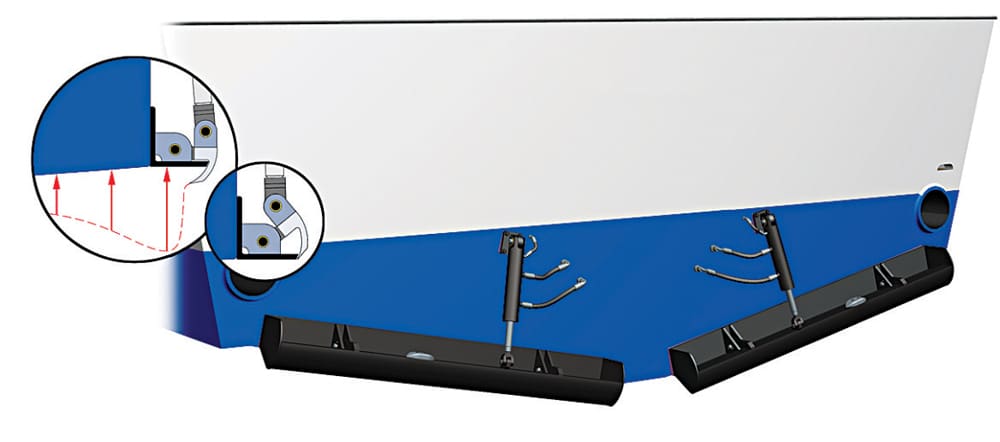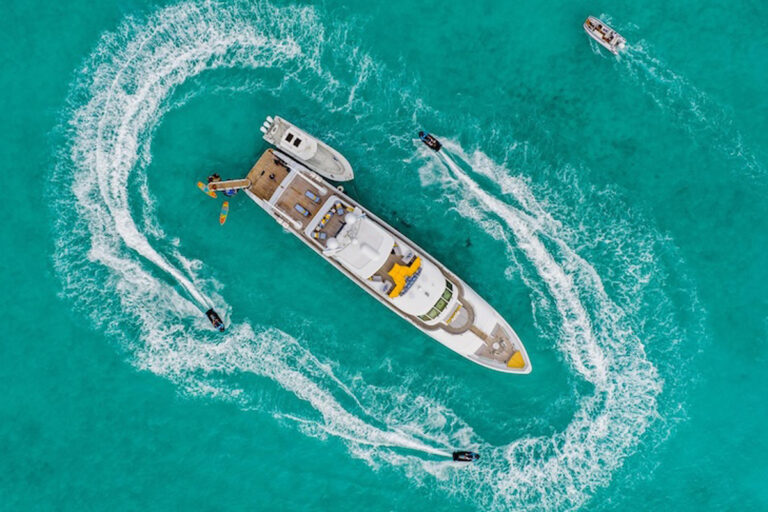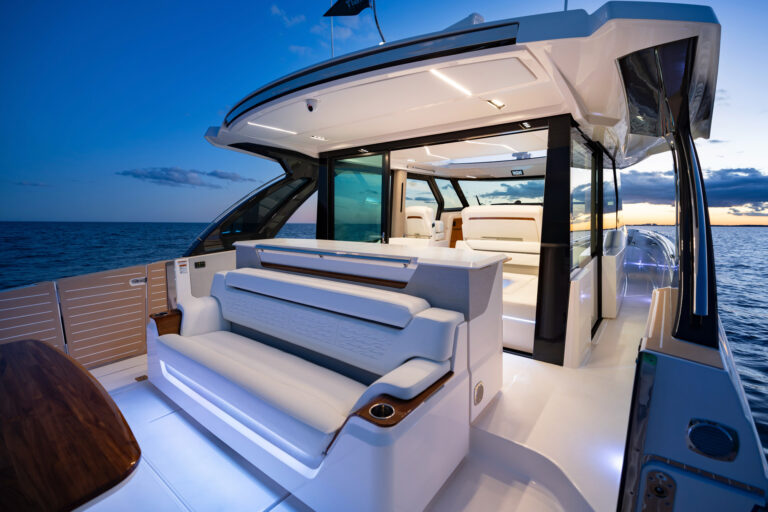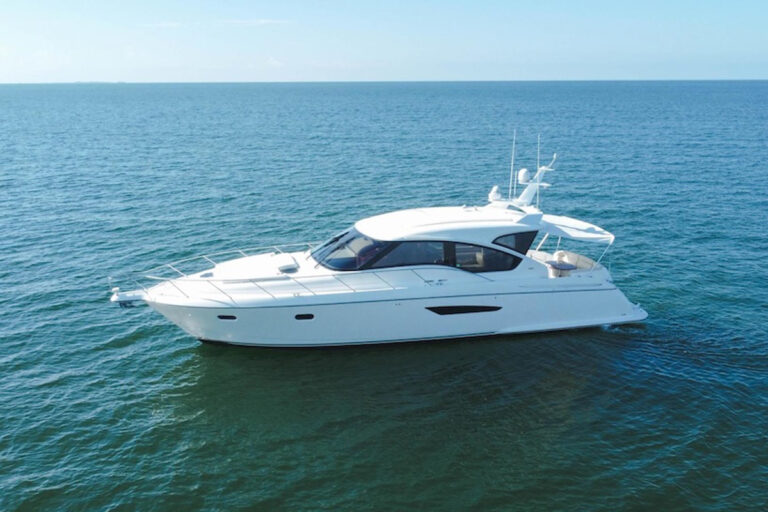
Trim-Control Systems
Rolling can be the most annoying of motions, but pitching — the rise and fall of the bow at sea — is a close second. It is a bit more difficult to control than rolling, but it can often be mitigated by adjusting the running trim of the boat. A wide variety of trim-control devices are available, but they all share one goal: changing trim (bow-up or bow-down angle) for better performance.
The choices available to yacht owners for trim control include fixed, adjustable and controllable devices. Bottom wedges — sometimes called shingles — are generally fixed but can also be adjustable using shims. The operator, using either hydraulic or pneumatic actuators, most often controls trim tabs, submerged foils and interceptors.
Trim tabs may be attached to the transom, but on many boats they are built into recesses molded into the hull bottom. Each is effective and has its advantages. When recessed under the hull, tabs are out of the way and less likely to snag lines, so they are particularly favored on sport-fishing boats. Unlike recessed tabs, transom tabs can be given a slight up-angle in the retracted position, which enables them to create a bow-up effect not generally possible with recessed tabs.
Interceptors, sometimes called intruders, are taking the place of trim tabs on some fast boats. They create the same trimming effect, but purportedly with less drag, and thus less effect on the top speed. The simplest examples are plates that mount flat against the transom. On some models the entire width of the plate slides downward past the transom/hull bottom edge into the water flow. On other installations the plate is pinned on its inboard end so that only part of the plate rotates down into the water flow. On a third type, there is no plate, but rather a knife-edged prism that rotates down into the water.
In each case, these devices intercept or intrude on the high-speed flow of water at the transom. This creates a region of high pressure immediately forward of the interceptor itself, under the last few inches of the hull bottom, lifting the stern to reduce the running trim angle.
On yachts with outboard, inboard/outboard, water-jet or surface-drive propulsion systems, there is often an integral trimming feature built into the system. In most cases, this eliminates the need for auxiliary trim-control devices.
Most trim-control devices operate at the stern, lifting it and at the same time depressing the bow for a flatter running angle, or pulling it down and thus raising the bow for a higher running angle.
Hook and rocker can also be used to affect trim when incorporated during construction by experienced designers. Most planing hulls are straight at the after end, but on some hulls, a slight curvature is present. If you look along the length of your hull bottom from amidships toward the stern, you may note a slight concavity (hook) or convexity (rocker), which create rise or drop at the stern respectively, enabling the use of smaller trim-control devices.
In recent years, computerized monitoring and control systems have been developed to provide total ride-control solutions. These sophisticated systems are capable of coordinating two or more motion-control devices in a symphony of response to quell both roll and pitch. The most common arrangement utilizes stabilizer fins (or rotors), interceptors (or trim tabs) and rudders, all coupled to a centralized control system. These integrated systems offer some of the best motion control available today but, due to the high cost, are generally found only on superyachts and specialty craft. As with any out-in-front technology, it’s likely that as the technology matures, the cost will decrease, opening up more options.









